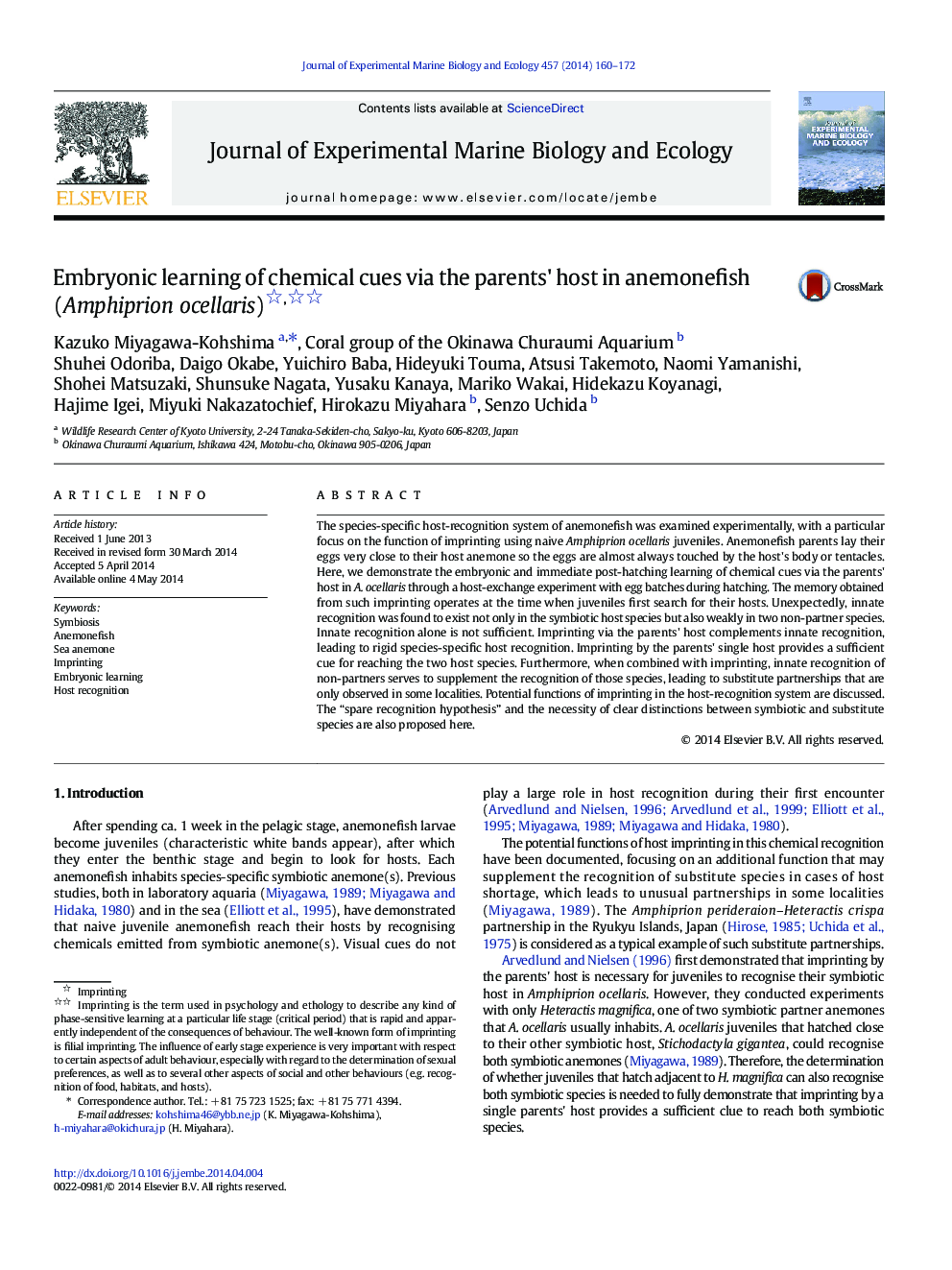| Article ID | Journal | Published Year | Pages | File Type |
|---|---|---|---|---|
| 6304215 | Journal of Experimental Marine Biology and Ecology | 2014 | 13 Pages |
Abstract
The species-specific host-recognition system of anemonefish was examined experimentally, with a particular focus on the function of imprinting using naive Amphiprion ocellaris juveniles. Anemonefish parents lay their eggs very close to their host anemone so the eggs are almost always touched by the host's body or tentacles. Here, we demonstrate the embryonic and immediate post-hatching learning of chemical cues via the parents' host in A. ocellaris through a host-exchange experiment with egg batches during hatching. The memory obtained from such imprinting operates at the time when juveniles first search for their hosts. Unexpectedly, innate recognition was found to exist not only in the symbiotic host species but also weakly in two non-partner species. Innate recognition alone is not sufficient. Imprinting via the parents' host complements innate recognition, leading to rigid species-specific host recognition. Imprinting by the parents' single host provides a sufficient cue for reaching the two host species. Furthermore, when combined with imprinting, innate recognition of non-partners serves to supplement the recognition of those species, leading to substitute partnerships that are only observed in some localities. Potential functions of imprinting in the host-recognition system are discussed. The “spare recognition hypothesis” and the necessity of clear distinctions between symbiotic and substitute species are also proposed here.
Related Topics
Life Sciences
Agricultural and Biological Sciences
Aquatic Science
Authors
Kazuko Miyagawa-Kohshima, Hirokazu Miyahara, Senzo Uchida,
